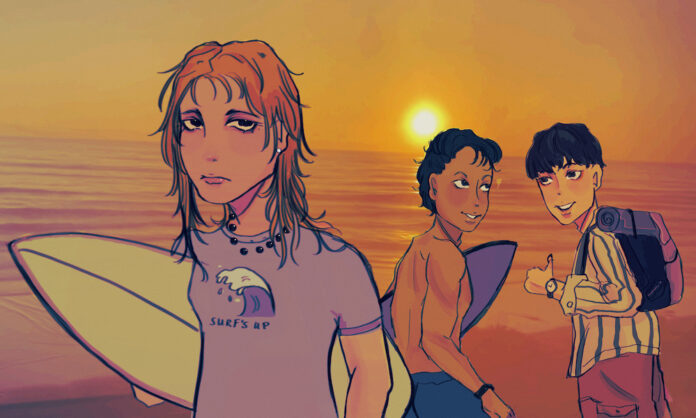It was the Summer of 2019 and I was leading a group of teenagers on a three-mile off-trail section at the end of a twelve-mile day. We were contouring across a steep boulder field. I was in the front, keeping a slow and steady pace to ensure that the group stayed together — an essential practice when backpacking off-trail. I did a double-take when I saw my co-leader of the hike leaving his post in the back of the group to cut around me.
“Hey,” I said, trying to keep my voice polite. “Can we all stay in a single file line? We don’t want to drop boulders on anyone.”
I was echoing a rule I’d heard countless times throughout my backpacking career: never hike above or below anyone else, as one misplaced step on a loose rock could cause the person below you serious injury.
My co-leader nodded in acknowledgment, and returned to his place in the back, reforming our line. However, a few minutes later, it was like I had never spoken. He led half of the group above me once again. I gently reminded him again that this wasn’t safe. This pattern repeated itself a few times, until I finally gave up, my chest tight as I watched him forge ahead of me. I felt like my leadership and judgment were being dismissed and I started to cry — hot angry tears that I tried not to show as I trudged on.
I found out later that my co-leader had been bragging about the way he treated me to some of our co-workers, calling me incompetent and saying that he was going to intentionally treat me like a child. I know that I’m a hard worker and a strong hiker, but the comment still hurt. At the end of the day, being a woman in male-dominated spaces like outdoor recreation is about fighting to prove your competency, because it’s seldom assumed that you have any.
I see this often when I go surfing as well. My brother and I will paddle out together, and immediately the men — because it is mostly men in the lineup — will start chatting with him: about how the waves are, what kind of board he has and how long he’s been surfing. I sometimes smile and chime in, only to be mostly ignored, but often I sit quietly like the ghost they seem to think I am.
Conversely, when I go out on my own or with another woman, the tone immediately shifts. Without an accompanying male presence, it is like the cloak shading me from view has been ripped off, and I am visible. Suddenly, I am chatted with, asked questions and acknowledged.
This dichotomy is not malicious. I don’t believe that I am intentionally being ignored when my brother is present. There is simply an assumption that, if I am out in the lineup with a man, he is the one in charge, the one to talk to and the competent one.
Multi-gendered involvement in the outdoors has come a long way. For instance, in an Australian competition in 2018, the prize money for the women’s competition was $65,000, compared to the $100,000 awarded to the male winner. Later that year the World Surf League vowed to uphold gender pay equity, and both of this year’s winners will be awarded $70,000.
Despite the advances being made, there are still many factors that mark outdoor spaces as a safer place for men than women. Concerns about harassment and assault, as well as the consistent narrative that women need to be vigilant over their bodies at all times, can deter them from seeking out solo adventures in the outdoors. In addition, women’s gear ads can end up being more objectifying than empowering. The subtle messaging about the inherent masculinity of the outdoors can start as early as childhood, as studies have shown that fewer preschool girls than boys are taken outside to play.
Explicit and implicit societal messaging that discourages women from getting outside presents itself in a variety of ways, from being ignored in the lineup, to intentionally dismissed on the trail.
However, the rhetoric around the outdoors is not only that it’s an exclusively male space, but a place only for able-bodied, white men. Due to a long history of redlining, people of color are more likely to have little access to nature. In addition, there is a distinct lack of accessibility in parks and public lands for people with physical disabilities and limited information about the areas that have accommodations available.
I often have conversations with other women about our respective experiences being demeaned and undermined in spaces dominated by men, and I am even starting to witness men in my communities having discussions about how they can make these spaces inclusive. This, however, is something I believe must happen more frequently if equity is to be achieved in outdoor sports. It is men’s responsibility to initiate conversations about how to be more inclusive in spaces that have historically been theirs alone. I consider the wilderness to be a second home, and I want that home to be a place where everyone can feel comfortable. In order to achieve this, I believe that those involved in outdoor recreation need to be having consistent, intersectional conversations about how to combat micro and macroaggressions within these communities. It cannot only be those affected who talk about it — in order to create change, it must be everyone.
![]()




































